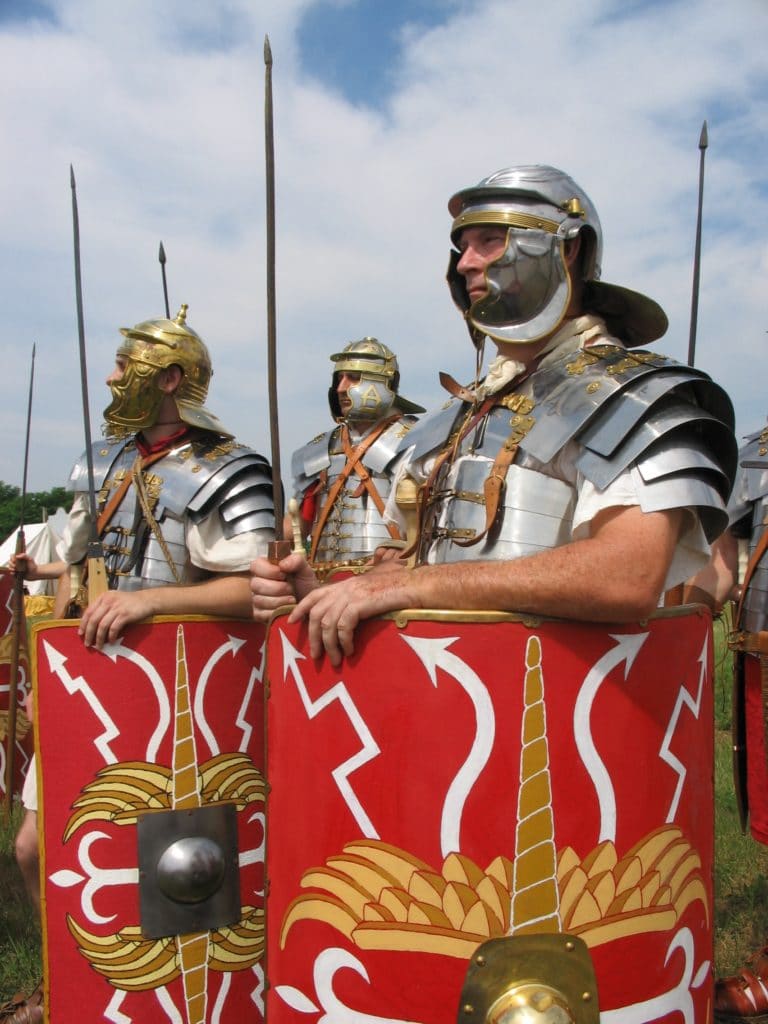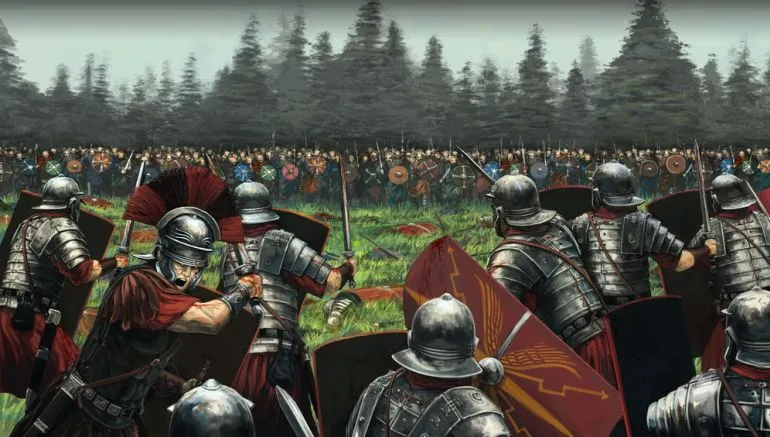Last updated on July 29th, 2022 at 10:16 pm
The Romans built arguably the greatest empire of pre-modern times. But, of course, there were bigger empires than it. For example, the Mongol empire was much more extensive. But these other great empires were often short-lived and unstable, and the people who lived in them did not acquire a decent standard of living.
By contrast, the Roman Empire lasted hundreds of years, was stable for significant periods, and people who lived under its emperors acquired a standard of living that was not equaled again until the eighteenth century.
Central to this empire was the Roman war machine, which first built the empire, kept it at peace, and protected its borders for long periods. But while we are all familiar with the Roman legions, what was daily life like for an ordinary legionary?

Changing Experiences of the Roman Legions
It should be noted that daily life for a Roman legionary differed greatly depending on what period of Roman history is being considered. For instance, for most of the Republican period, the legionaries were not professional soldiers.
Roman citizens were called up for service from season to season as the Republic found itself at war with other countries. However, it was only in 107 BC that the concept of the professional soldier emerged in the Republic when one of Rome’s greatest generals, Gaius Marius, implemented a series of wide-ranging reforms to the army.
After that, professional legionaries emerged who might serve for 20 or 30 years in the legions. But even during the imperial period, things differed significantly from generation to generation. The legionary of the civil war period, which brought the Republic to an end in the mid-first century BC, lived a much bloodier (and possibly shorter) life than his counterpart during the comparatively peaceful second century AD.
Training and Equipment
The average professional legionary following the Marian Reforms was recruited from amongst the Roman plebeian class. At the same time, those of a higher social status would have been fast-tracked to becoming officers.
The training was limited. Soldiers might receive a few months of basic training before being assigned to a legion. If that legion were stationary and not on active duty, it would perform drills near the fort it was stationed next to.
Early in its history, these occurred on the Field of Mars outside Rome, but later the Roman legions were prohibited from being stationed in Italy altogether.
Generally, one learned on the job, as it were. There was standard equipment, consisting primarily of chain mail armor called lorica hamata, meaning an armored coat; a long, square shield called a scutum; a helmet called a galea; a short sword known as a gladius from which the term gladiator is also derived; and two javelins, one light one called a verutum and one heavy one called a pilum.

Some legionaries might have carried additional bits of armor and smaller weapons. However, most wore sandals or boots, and their legs were relatively unprotected if caught in a surprise attack, though metal greaves would have been put on when preparing for battle.
The Daily Life of a Legionary
Daily life for a legionary varied according to where he was stationed and the political circumstances of the time. Suppose he was living through the civil wars of the first century BC and the massive expansion of the Republic, which was simultaneously occurring he more than likely spent a lot of his time on the move and fighting battles.
However, if he lived in one of the long periods of peace that characterized the first and second centuries AD, he might spend longish stretches of time stationed at some border fortress.
In such instances, the legionary would have spent a lot of time doing construction as the Romans typically erected new colonies in regions using the military first. He would have lived in a barracks in a recently conquered region such as Britain. But over time, these would have evolved more into civil settlements, and the legionaries might have built their homesteads around the fort where they would have started a family.
In the more typical fort-style situation, the legionary effectively lived in a barracks. As noted, much of his job would have involved construction work, but often it would have been more tedious labor, such as manning watch stations to see if the natives were planning anything or patrolling through towns and villages.
The Diet of a Legionary
His diet would consist of two large meals, prandium and cena, the equivalent of breakfast and dinner. The staple was bread, as it was for the bulk of the population of Rome, while cheese, vegetables would have supplemented this, and often a generous portion of meat, though not of the best kind.
For instance, this would have involved a lot of salt pork which could be preserved for long periods. Salt and vinegar would have added flavor, while olive oil was a staple. A daily ration of wine and beer would have been provided to all legionaries. In addition, legionaries could supplement their diet through foraging and no doubt simply robbing the civilians on whose lands they were adjacent.
The Growing Power of the Roman Legions
When Marius implemented his reforms and professionalized the Roman legions in 107 BC, he inadvertently sowed the seeds of Rome’s destruction. For decades after that, the Roman legions became more and more powerful. But their commanders, such as Julius Caesar and Octavian, reaped the benefits of that power.
Octavian eventually used the legions to win a civil war within the Republic and then gradually transformed it into an empire with himself as to its ruler. But once the emperors were established, the legions continued to hold enormous power.
They slowly began to decide who the emperor should be, as occurred in 68 AD when various legions across the empire crowned multiple generals as the new emperor. Thus, daily life began to change for the Roman legionaries as the decades passed in their lives became more politicized.
This was especially the case from the 190s onwards as the empire was thrown into a series of civil wars which lasted for nearly a century. In the course of this, the Roman legions crowned and deposed dozens of emperors.
Changing Demographics and the End of the Empire
By the third century, when these civil wars were occurring, another massive change was also occurring in terms of the demographics of the average Roman legionary. He was no longer Roman or even Italian. Sure, he might have Roman citizenship, as this had been extended to all the free subjects of the empire in 212 AD, but the denizens of the Italian peninsula had long since grown rich and fat off the proceeds of the empire.
By the third century, the legions were packed with Spaniards, Africans, Britons, and even people from beyond the empire’s borders. By the end of the third century, the average Roman legionary was likelier to be a Germanic tribesman than a Roman. Thus, on an average day in a Roman barracks in the 290s, one was more likely to see a legionary praying to Odin or Thor than he was to Jupiter or Mars.
And this ultimately was indicative of how Rome would fall in the end. As the decades went by, its borders were penetrated by Germans who Rome wasn’t paying. Eventually, these tribes began deciding that they might as well take over the provinces themselves. The collapse of the empire followed soon afterward.

